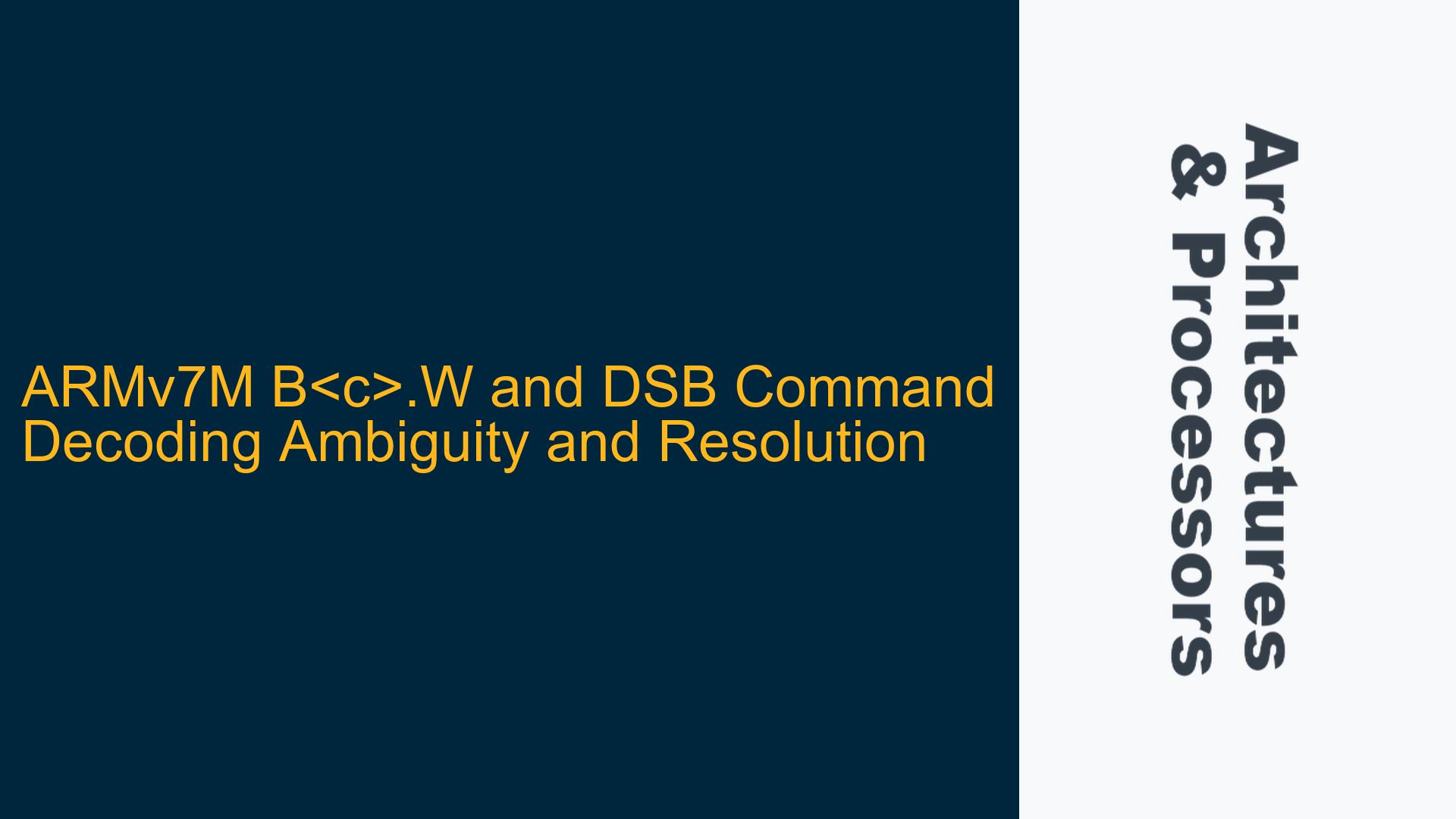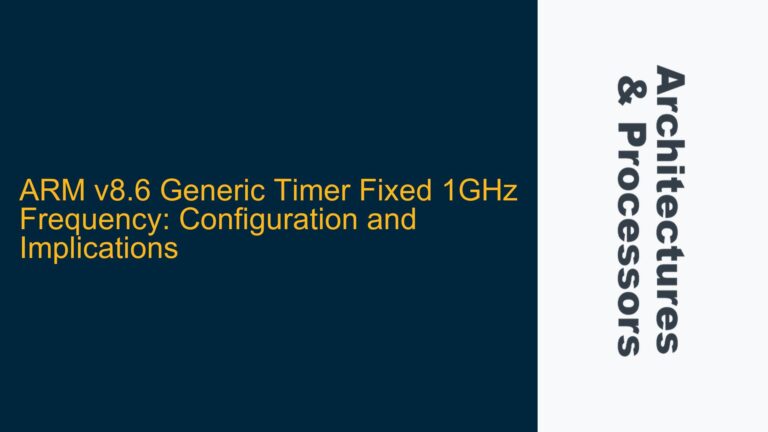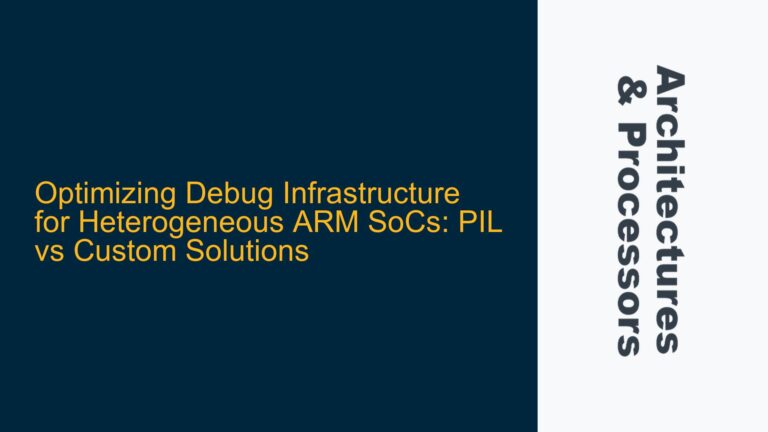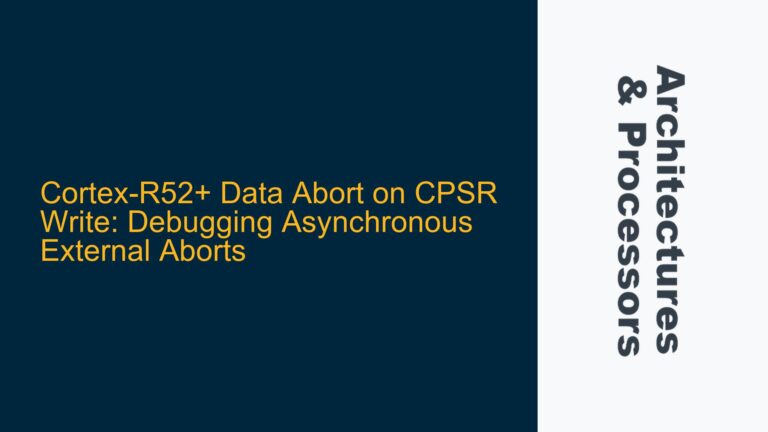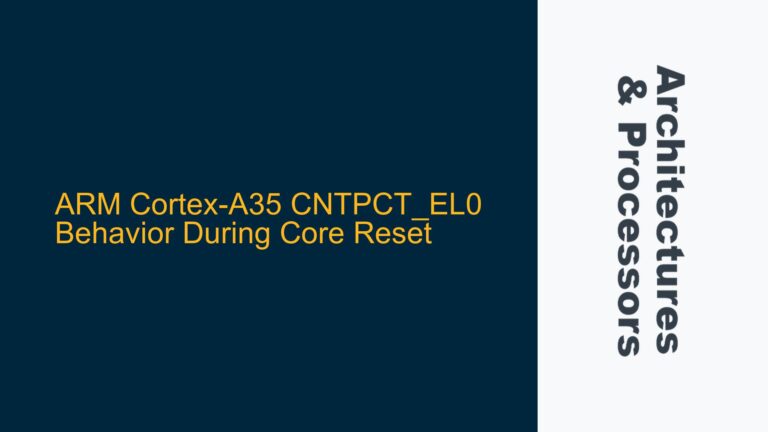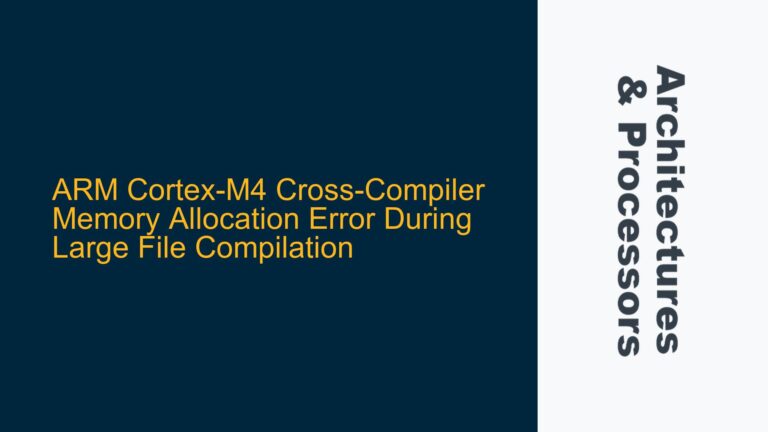ARMv7M Instruction Encoding Ambiguity Between B.W and DSB
In the ARMv7-M architecture, the encoding of certain instructions can lead to ambiguity when interpreting machine code. Specifically, the B<c>.W (Branch with condition, wide) and DSB (Data Synchronization Barrier) instructions share overlapping encoding patterns under specific conditions. This overlap arises due to the way the instruction set is designed, where certain bit patterns in the instruction encoding can be interpreted differently depending on the context.
The B<c>.W instruction is a conditional branch with a 32-bit wide offset, allowing for a larger range of jump targets compared to the 16-bit Thumb branch instructions. The DSB instruction, on the other hand, is a memory barrier instruction that ensures all explicit memory accesses before the DSB are completed before any subsequent instructions are executed. Both instructions are critical in embedded systems, with B<c>.W being used for control flow and DSB for ensuring memory consistency in multi-core or DMA-heavy systems.
The ambiguity occurs because the encoding of the B<c>.W instruction includes a condition field (cond), which is 4 bits wide. When the top 3 bits of this condition field are set to 1 (i.e., the condition field is 1110), the instruction is no longer interpreted as a B<c>.W but instead as a DSB instruction. This behavior is not immediately obvious from the older ARM documentation (e.g., ARM DDI 0403D), which led to confusion among developers trying to decode or disassemble machine code.
Condition Field Encoding and Instruction Reinterpretation
The root cause of the ambiguity lies in the instruction encoding scheme of the ARMv7-M architecture. The B<c>.W instruction is encoded with a specific bit pattern that includes a 4-bit condition field. This condition field determines whether the branch is taken based on the state of the processor’s condition flags (e.g., Zero, Carry, Negative, Overflow). However, when the top 3 bits of the condition field are set to 1 (i.e., 1110), the instruction is reinterpreted as a DSB instruction.
This reinterpretation is a result of the ARMv7-M architecture’s design to optimize the instruction set for both performance and code density. By reusing certain bit patterns for multiple instructions, the architecture can support a wide range of operations without excessively increasing the instruction set size. However, this design choice can lead to confusion when disassembling or debugging code, as the same bit pattern can represent different instructions depending on the context.
The condition field 1110 is particularly significant because it corresponds to the "Always" condition in the ARM architecture, meaning the branch is always taken. However, in the context of the B<c>.W instruction, this condition field is reinterpreted to indicate a DSB instruction. This behavior is documented in newer versions of the ARM architecture reference manual, but it was not clearly explained in older versions, leading to the confusion highlighted in the discussion.
Resolving Ambiguity Through Documentation and Disassembly Tools
To resolve the ambiguity between B<c>.W and DSB instructions, developers must rely on accurate documentation and disassembly tools that correctly interpret the instruction encoding. The first step is to ensure that the latest version of the ARM architecture reference manual is used, as it provides the most up-to-date and accurate information on instruction encoding. In this case, the newer documentation clarifies that a B<c>.W instruction with a condition field of 1110 is reinterpreted as a DSB instruction.
When disassembling machine code, developers should use tools that are aware of this reinterpretation rule. Many modern disassemblers and debuggers are capable of correctly distinguishing between B<c>.W and DSB instructions based on the condition field. However, if an older or less sophisticated tool is used, it may incorrectly disassemble a DSB instruction as a B<c>.W instruction, leading to confusion during debugging or analysis.
In cases where manual decoding of machine code is necessary, developers should carefully examine the condition field of the B<c>.W instruction. If the top 3 bits of the condition field are 111, the instruction should be interpreted as a DSB rather than a B<c>.W. This manual decoding process can be error-prone, so it is generally recommended to rely on up-to-date disassembly tools whenever possible.
Additionally, developers should be aware of the implications of this reinterpretation when writing or modifying assembly code. If a B<c>.W instruction with a condition field of 1110 is inadvertently used, it will be executed as a DSB instruction, which could lead to unexpected behavior in the program. To avoid this, developers should ensure that the condition field of B<c>.W instructions does not unintentionally match the 1110 pattern.
In summary, the ambiguity between B<c>.W and DSB instructions in the ARMv7-M architecture arises from the reuse of certain bit patterns in the instruction encoding. This behavior is clarified in newer versions of the ARM documentation, but it can still cause confusion if not properly understood. By using up-to-date documentation and disassembly tools, and by carefully examining the condition field of B<c>.W instructions, developers can avoid misinterpretation and ensure correct execution of their code.
